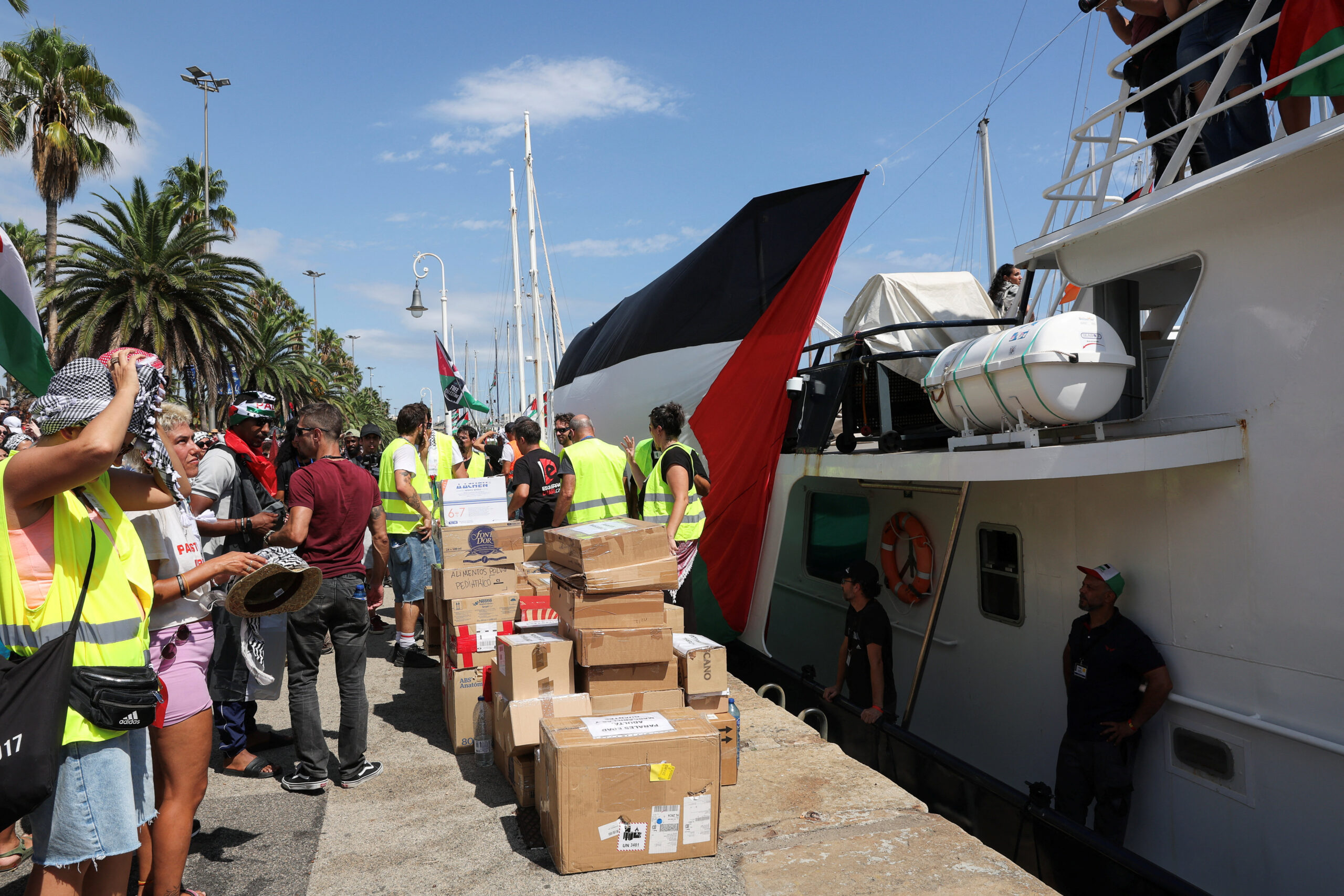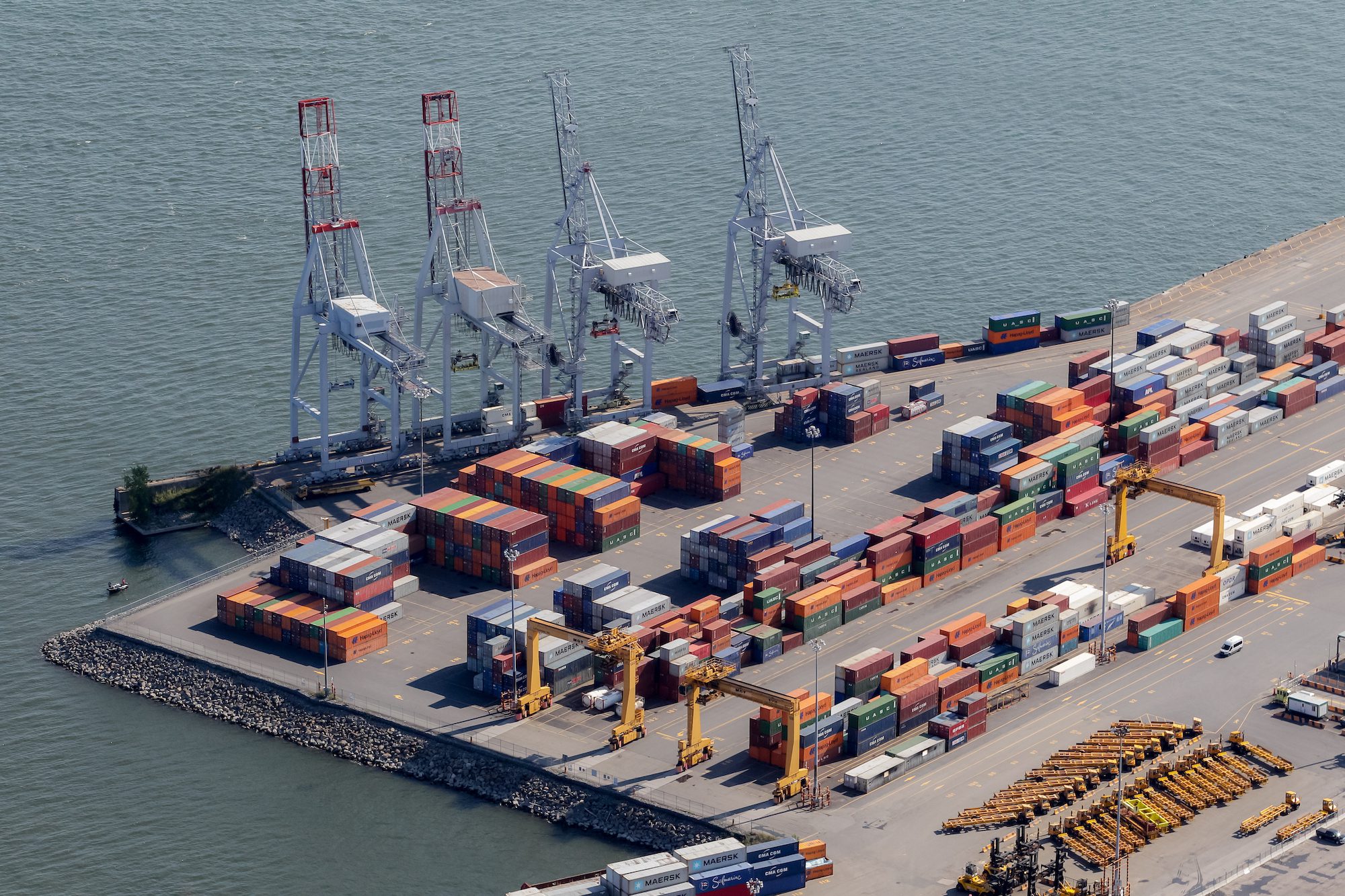Image courtesy Wilh. Wilhelmsen
The M/V Tønsberg, a RO/RO vessel was recently voted Ship of the Year. Fathom CTech’s Pete Lockley explored with the owners just what makes this vessel so special.
The Scandinavian owners of the M/V Tønsberg, Wilh. Wilhelmsen and Wallenius Lines, have long been at the forefront of sustainable shipping.
The companies are known for their committment to exceeding all environmental regulations or meeting them ahead of time, and have a track record of investing in cutting-edge technology on its vessels, as well as funding research into the next generation of technologies.
They have continued this proud record with the four vessels in the Mark V series, two for each owner to be operated by Wallenius Wilhelmsen Logistics (WWL).
The lead vessel, M/V Tønsberg, is the largest RO/RO vessel ever built, offering about 138,000 cubic metres of fully enclosed cargo space. The Tønsberg was recently voted Ship of the Year by the Japan Society of Naval Architects and Ocean Engineers.
Designed by Wilh. Wilhelmsen’s technical department in collaboration with Mitsubishi Heavy Industries (MHI) and built at their Nagasaki shipyard, it features a host of environmentally-friendly design elements that together yield a fuel saving of 15-20% per unit of cargo over the Mark IV (launched in 2000).
The company is keen to emphasise that the energy saving and efficiency gains come not from one single initiative but from the sum of many. They certainly feel that this comprehensive approach can only be brought about through excellent cooperation and a partnership with a knowledgeable shipbuilder.
For all aspects of the design, the company also called on the expertise of other parts of the group, as well as those with the most direct experience of operating the vessels – the seafarers themselves – in order to source and test ideas.
Here we take a closer look at the ship’s green credentials, and examine the process and philosophy that led to the innovative design.
Hull form and design process
Optimum hull shape for RO/ROs is a challenge, given the need to balance hydrodynamic efficiency with stability and cargo carrying capacity – especially for ships expected to operate at a range of draughts due to their versatile cargo mix over 120-day round-the-world trips.
The Tønsberg‘s hull shape was arrived at after extensive design and testing work by WW and MHI, which went far deeper than the usual collaboration between owner and yard.
Maximising available cargo capacity is one of the surest ways to reduce fuel consumption per tonne of cargo carried. WW therefore placed great emphasis on the design of the cargo hold, and believes it has achieved the most efficient use of space in any deepsea RO/RO to date, thanks to a clean structural arrangement with flush bulkheads, long pillar spacing and electronically operated lightweight hoistable decks.
Hoistable ramps inside offer loadable space both on and underneath them, which is a new feature for such a large RO/RO vessel. Following proudly in the line after Mark I – IV, the Mark IV’s stern ramp, which is capable of 505 t cargoes, brings WWL’s capacity to new heights.
In addition, the Mark V has a new feature: the large loading area on the weather deck, utilized for light and long cargoes such as windmill blades and yachts, or the return of roll trailers.
Gunnar Gamlem, naval architect at Wilh. Wilhelmsen, explained that the bow and the flare angles in particular were carefully designed to minimize added resistance in waves and in deep draughts.
“Also, the transom design had to balance the demand for form stability and drag; this is a tricky balancing act and a major challenge for RO/RO vessels,” he notes. “A ducktail was fitted to reduce the base drag experienced at deeper draughts; model tests showed 1% at design draught rising to 5% at deeper draughts.”
Gamlem highlights the importance of detailed design work both prior to and as part of the contract with the shipbuilder. Model tests for the Tønsberg were done even before the contract was signed and the full scope included tests at five different draughts. Tests were also conducted with and without ducktail and with several rudder alternatives.
Machinery
The Tønsberg is powered by a single MAN B&W engine, the 7L70ME-C8.
The electronically controlled (ME) engine concept offers a lower specific fuel oil consumption (SFOC) through variable electronically controlled timing of hydraulic fuel injection and exhaust valves at any load.
The 20MW engine drives a single large fixed-pitch propeller – a conventional propulsion set-up perhaps, but one the company carefully considered before deciding it was the optimum choice for a vessel that spends up to 70% of its time afloat in deep-sea transits; its roundtrip includes two Atlantic and two Pacific crossings.
After extensive testing, the eventual choice of rudder was a streamlined, slim and twisted full-spade Becker rudder with a Costa bulb which yielded a saving of 4% over more conventional rudder types, of which 2% can be attributed to the bulb. The bulb was designed by MHI and fabricated by Becker.
The bespoke propeller was designed and cast by MHI in Nagasaki and ended up as a six blade design to minimize vibrations.
More radical is the inclusion of a turbo generator, designed and supplied by MHI, that recovers waste heat from the main engine exhaust, using it to power an Aalborg boiler to meet the majority of the ship’s electricity needs.
The turbo generator (T/G) works in concert with a shaft generator (S/G), with the T/G output determined by the engine load and the S/G providing any additional power required.
This arrangement is estimated to save 5-6% of total fuel consumption, as the T/G can cover the majority of the demand in normal sea going condition – approximately 700-900 kW, depending on engine load.
It is interesting to learn that a similar solution was indeed fitted to a series of Wilh. Wilhelmsen’s RO/RO vessels in the early 1980s; the comeback on M/V Tønsberg is attributed to increasing environmental concern as well as fuel oil prices.
A focus on fuel-saving
The determination to save fuel permeates every aspect of the design, with attention paid to opportunities both small and large. The ship features energy-efficient chilled water air conditioning, additional insulation of the living quarters, and fuel-saving, dual-speed pumps supplied by Teikoku.
The designers also looked at a range of ways to cut down the lightship weight of the vessel, reducing displacement and therefore fuel consumption. The liftable decks (intended for light cars) were constructed by TTS with plywood plating to give an estimated 25% weight saving.
Due to its high position, cutting weight from the accommodation block gives stability benefits as well as reducing displacement. Aluminium was considered for the block but was eventually ruled out: at the time, large aluminium structures could not be fabricated in Japanese yards and would have needed to be imported at prohibitively expensive cost.
Other features
As well as their focus on cutting fuel consumption and reducing CO2, the designers of the Tønsberg ensured that the ship’s environmental performance was optimised in a range of other areas.
It is ‘retrofit ready’ for a scrubber, with space set aside in the funnel for the installation of an exhaust gas cleaning system.
The ship also meets IMO guidelines on ship recycling, and comes with a green passport certifying that any potentially hazardous materials used in the construction of the ship, or in its equipment and systems, have been properly handled and documented.
Finally, the fuel tanks are designed with double hull protection, to reduce the risk of leakage in case of any damage to the hull.
An eye to the future
Back in 2005, WWL who will be operating the Tønsberg, developed a radical concept car carrier it calls the E/S Orcelle: a zero emission, zero-ballast ship with a pentamaran hull powered entirely by solar, wind and wave power.
Whilst the company has always said that E/S Orcelle will not see the light of day in the near future, the ship is intended to be a radical vision that inspires the design of real ships.
Indeed the two owners and WWL have been actively testing solar panels on board the M/V Toreador since 2009, and fuel cells on the M/V Undine. The Orcelle’s radical design elements were all also considered for the Mark V, but only the Waste Heat Recovery system in its entirety was eventually adopted although lightweight materials were incorporated in to the design of the hoistable car decks.
Gamlem is frank about the pitfalls of bringing cutting edge technologies to market, saying “the output of today’s solar panels is generally too small to make a big difference and we feel that the upper deck is better utilized for cargo.”
“The pentamaran hull will only be interesting for very light cargo mixes or for very wide beams,” he continued, “which entails very high cargo carrying capacity far beyond what is considered commercially interesting today.”
“We have also studied sails to harness the wind energy but concluded that sails really do not fit our ship type very well due to air draught restrictions under bridges, stability issues and the high speed (20 kn), which means that the self-generated wind often results in head winds that are unfavourable for sailing.”
Whilst the vision delivered by the Orcelle may still be some way off being a reality, the Tønsberg shows just how much can be achieved.
Environmental concern as well as fuel price are major drivers for the strategy of innovation in the Wilh. Wilhelmsen Group. It can therefore only be concluded that its knowledge base in renewable and radically efficient technologies will prove an invaluable investment as the price of bunkers continues to climb.
So returning to the question in the title of this article – what makes the Ship of the Year so special? It can be concluded that it is not just the boundary pushing design features, but also a spirit of collaboration coupled with a willingness to explore and consider all options (however radical they may at first appear) that have contributed to making this vessel so unique.
For the original article please see http://fathom-ctech.com/spotlight/. Fathom-CTech works with a wide network of owners and operators on their knowledge, choices and experiences with fuel efficiency technologies.

 Join The Club
Join The Club










